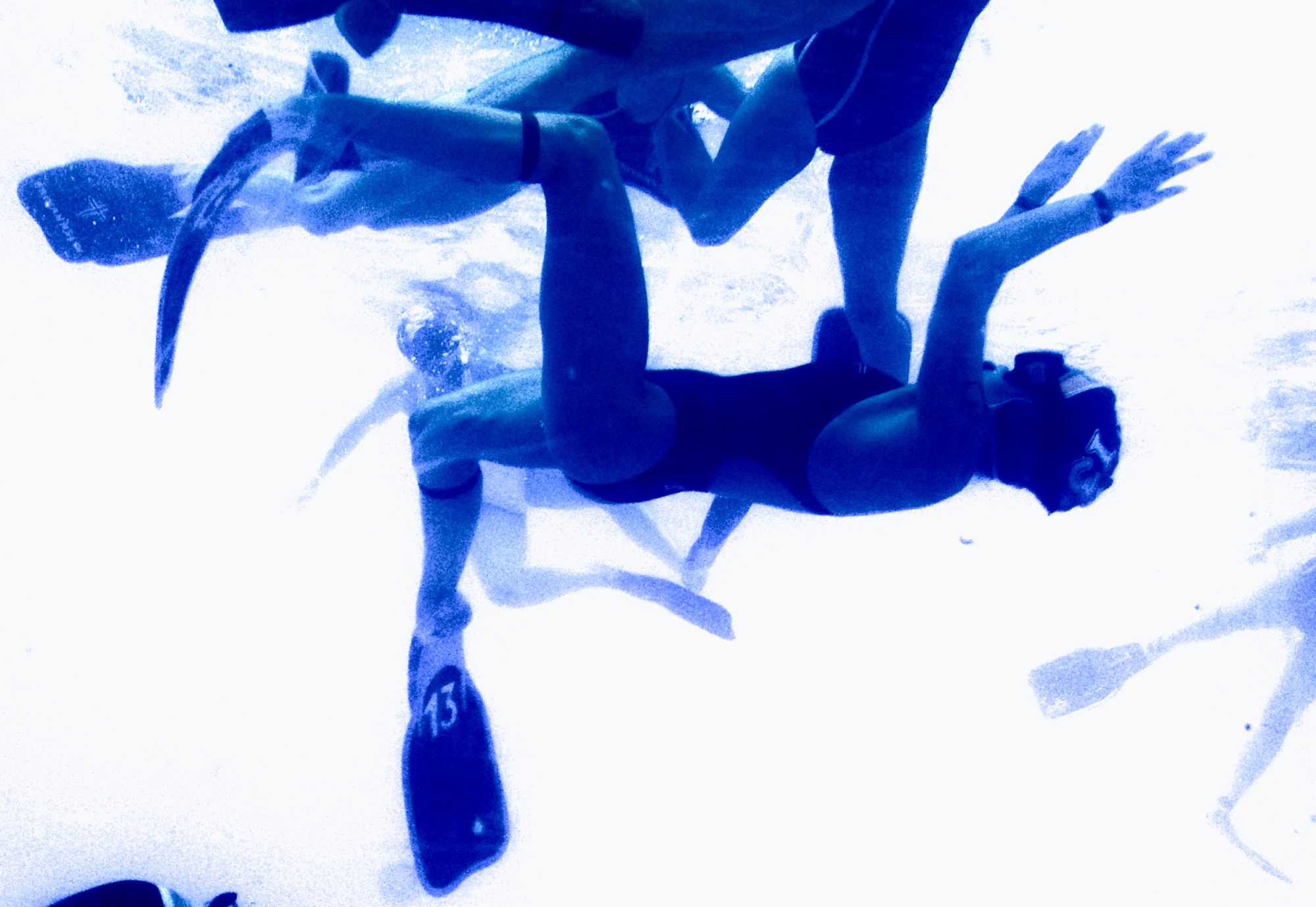Uncertainty surrounds 2023 Montreal World Championship pool conditions.
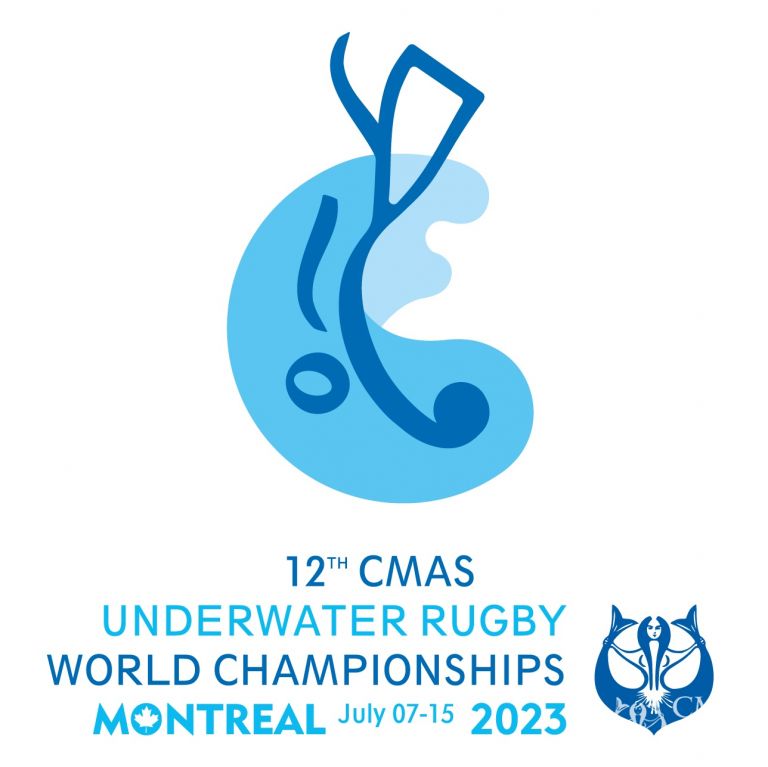
Olympic standard pools are not the favorite venue of every underwater rugby player. Those who prefer to bang in the compact pressure cooker of a small playing field are perhaps the majority and yet there are those who flourish in a large pool.
The official CMAS rules of underwater rugby allow for a range of swimming pool width, length and depth. Montreal, host to the upcoming 2023 World Championships, will likely utilize the diving pool of the Piscine du complexe sportif Claude-Robillard.
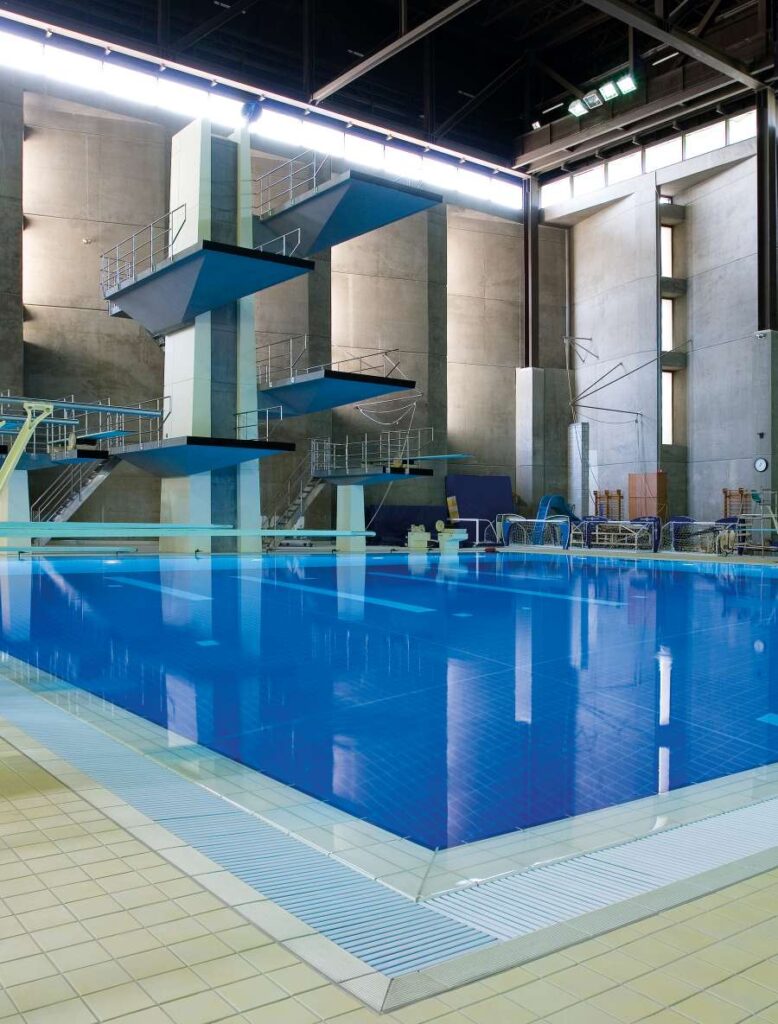
The pool is 20 meters long and 5 meters deep. However, there are rumors that the pool could be shortened through the construction of a temporary wall. This solution, however imperfect, has precedent from the last World Championships in Graz.
I know there has been talk about getting a wall, but the cost would increase for each team.. For all players’ sake, I hope we are able to get a wall.
—Isabelle Bernard, Canadian National Team veteran
Since the announcement of Montreal’s selection in August last year, CMAS posted the competition’s date and logo on the official events calendar. However, with less than a year remaining before Montreal 2023, players and coaches do not have final word on the temporary wall solution. Many now anticipate the full 20 meters.
Linda Karlsson, a Swedish national team player who did not compete at the European Championships this summer, is not upset about the extra meters of water.
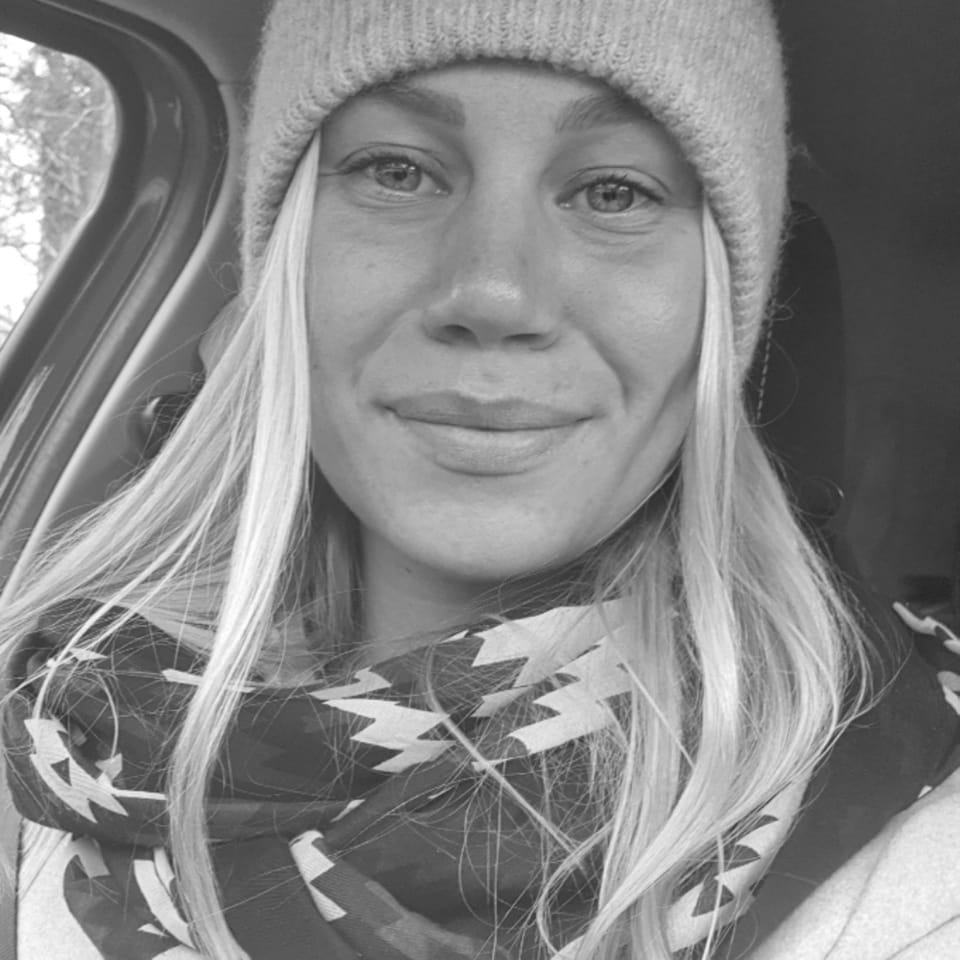
“I look forward to playing in a large deep pool, one gains a completely different freedom of action in a positive sense,” she said. “I am absolutely going to take back my goalkeeper position on the national team after having been busy with work.”
For David Tron, who captained Luxembourg when it made its debut in CMAS competition in Graz, pool size creates unknowns. He has only rarely played in a 5m deep pool and never one longer than 15m to 16m. He recognizes that this is his personal experience but he believes that the majority of players seldom have an opportunity to play in large pools.
“I can also imagine that this will favor fast swimming teams over more physical ones,” he suggested, “And more generally strong teams over weaker teams.”
He commented that it is undesirable to play the sport’s most important tournament under conditions that are unfamiliar to a significant percentage of teams.
“That being said: if the official rules allow the dimensions concerned for an official match, it seems legitimate to me that even a world championship can be organized there.”
As a team leader Tron has to consider more than his personal preference.
“… for a country with such a small pool of players as ours, many factors come into play: high transport costs, the Covid-19 pandemic that made recruitment difficult, dates that are not necessarily ideal for us… etc. But I have to admit that the size of the pool is also one of the points that is discussed and that makes many players “worried”.”
The size of the pool, however, is not the sole determinant in his opinion, but one negative factor among others.
“For a big country it is not a real problem to replace some players–and I cannot really imagine that players would refuse a national team spot they worked hard for because they don’t like the pool?–for a small country like ours it is.”
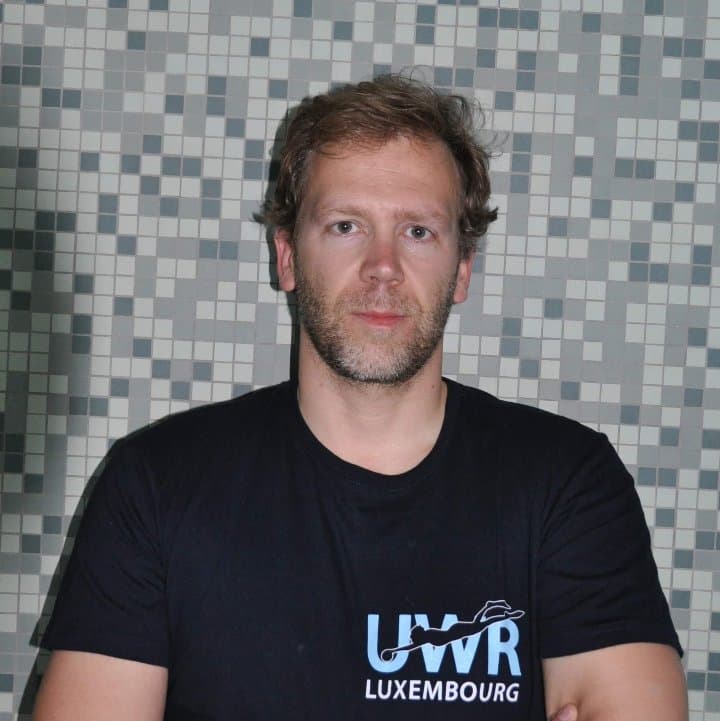
Austria, a more established rugby nation, illustrates his point. In the opinion of Thomas Schenkeli, a national team veteran, the Montreal pool will not dampen his or his teammates’ competitive spirit.
“Nobody in Austria will give up his spot [on the national team] because of a big pool. We would prefer a smaller pool but the best team will still win,” he said.
“I know that Scandinavians like more fighting and less swimming. But isn’t it fairer if it is sometimes a bigger and sometimes a smaller pool? Ski races are also not always happening on the same track. If you are the best, you can still prevail.”
Oscar de la Guerra, a player in Montreal, competed in Graz and hopes to represent Canada again next year. He has tried out the venue:
“The pool is big, it is true… personally the depth is ok for me, [it] is a little longer than usual but is a matter of adapting your cycles of apnea to it and coordinating the strategy with your partners in the water and out of it.”
De la Guerra believes the top teams will cope relatively easily. He outlined a number of common sense adjustments to strategy dictated by a large pool, adding that these would be most effective if all the players on a team were in good enough physical condition to execute them.
For example, he sees challenges for the weaker nations keeping three or 4 players below on offense for long periods of time. His expectation is that the number of outlet pass options will diminish for those teams with worse conditioning.
Asked what the big pool meant for him personally, de la Guerrra responded:
“Well I think it does not change the fact that to become a good underwater rugby player you need good physical condition, strength, efficient underwater swimming technique and speed. If you have that, no matter the pool you play in, you’ll be able to have a good performance and contribute as the players on the elite teams do.”
Canada has held two clinics at the pool in Montreal to acquaint players with the venue. One was national team veteran Isabelle Bernard, whose home club in Timmins plays in 3.8m deep versus Montreal’s 5.0m.
“This is a huge difference compared to the pool I practice in my hometown. The depth for me personally isn’t really problematic; you adapt easily and it gives more room to play. However the length—it’s exhausting to swim across to the opponents net… it’ll be important to try and avoid swimming back and forth and to focus on playing near the nets (whether it’s defending or attacking).”
Players who have a background in competitive swimming gain an obvious edge in a pool like Montreal’s. The coach of Denmark, Michael Kragh, knows that he can call up stronger swimmers like Sigurd Dideriksen, a former elite competitive swimmer who plays goalkeeper. Dideriksen did not play for Denmark at the European Championships.
“We have a very strong team and we have 8-10 good players for each position, including mine,” says Dideriksen, “all the [Danish] goalkeepers showed super high quality at the EC.”
He agrees that the Montreal pool improves his chances of making the team next year.
“Yes, the different elements with the long and deep pool is indeed very good for a player like me, because my particular strengths are speed and endurance.”
Dideriksen had heard that a wall might be built.
“I’ve heard the rumors, but don’t know much about it,” he says. “I think it would be good to find out for sure, so that we can plan our training for the World Championships in good advance.”
The Danish national team already emphasizes swimming fitness but Dideriksen himself plans to add one extra swim workout per week if Montreal turns out to be 20m long.
Pool size preference depends partially on what pools have been available during rugby’s formative period. In Sweden, for example, small 25m pools with a deep end for platform and springboard diving were common. Increasingly, deep ends do not find support in the planning stage of new pool projects. Sometimes deep ends are in very wide pools that favor FINA events. However, in Australia, where the per capital ownership of pools is the highest in the world, large pools are relatively common.
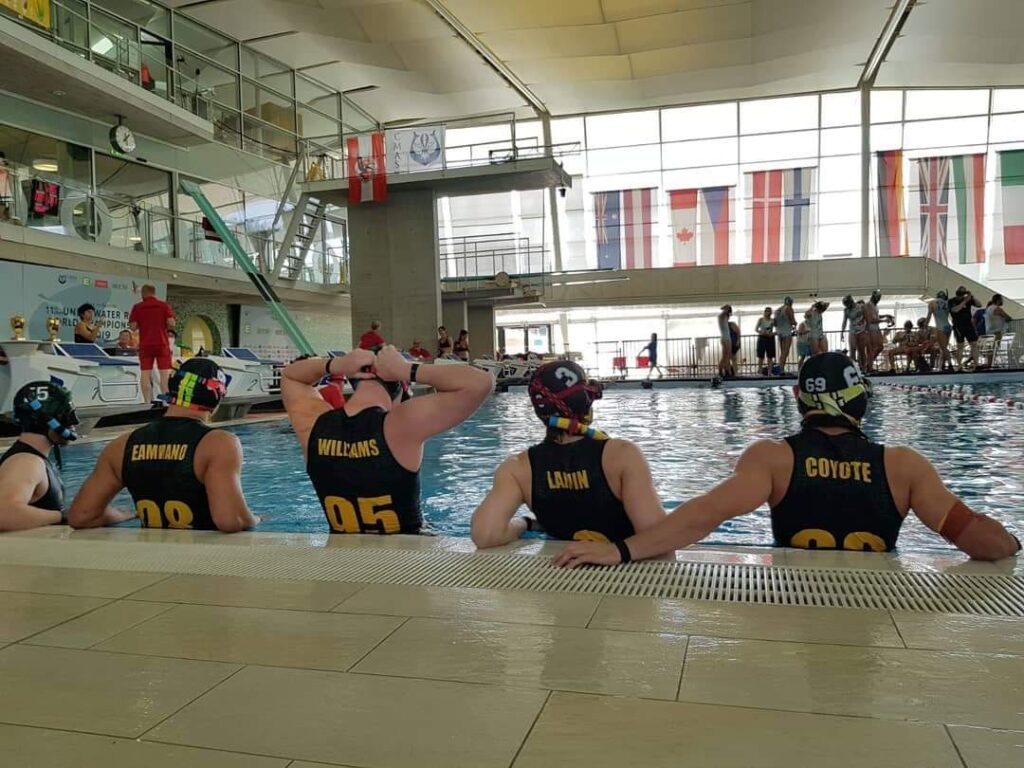
Angus Lamin, an Australian national team player, said: “I don’t mind bigger pools over smaller pools… we’ve not really been phased by the size of a pool at a competition.”
According to Lamin, most Australian clubs have access to a 5m deep pool, 15m or longer. He personally plans to concentrate on his cardio more than strength.
In fact, he noted that prior to Covid, Australia’s national championships took place in pools the same length and width as the pool in Montreal as it is.
The length and depth create questions for the officials. Kai Throndsen, an experienced referee speaking unofficially, said: “Rumor says wall. I have not see any plan for pool.”
He added that he personally did not mind the “extra” swimming. However, he observed that the water referees in a deep pool would certainly have to wear scuba tanks in the eventuality they had to lift an injured player from the bottom.
Not a single player interviewed for this article had any formal objection to the Montreal pool size.
Linda Karlsson said the pool size was not her primary concern: “What makes me nervous is not knowing where the final cost for each player is going to fall in financial terms. To represent one’s country at a world championship, one shouldn’t have to pay oneself. Our country should pay for us, that’s what I think.”
Clarification: The Complexe sportif Claude-Robillard was built for the 1976 Summer Olympics. It played host to the handball and water polo competitions as well as being the training centre for athletics, swimming and field hockey during the games. (Source: Wikipedia)
